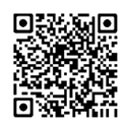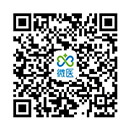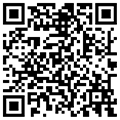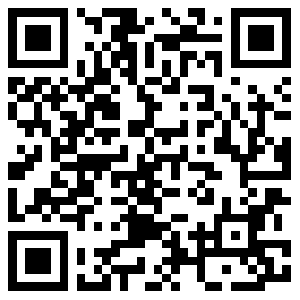iCare回弹式眼压计测量的重复性及其与Goldmann压平式眼压计...
2019年10月31日 9588人阅读
张顺华 刘小力 赵家良
【摘要】 背景 Goldmann压平式眼压计(GAT)是眼压测量的金标准,但由于操作复杂且需要良好配合而影响其临床应用。iCare回弹式眼压计(RBT)是一种新型的压平式眼压计,但需进行充分的临床应用评价。 目的 对iCare RBT检查者间及检查者内部的测量可重复性及iCare RBT与GAT测量值间的一致性进行研究。 方法 2位操作者使用iCare RBT对36例青光眼及可疑青光眼患者双眼各测量1次,分别记录读数,对iCare RBT检查者间的重复性进行评价。2位操作者使用iCare RBT分别测量56例和52例青光眼及可疑青光眼患者的双眼,并记录眼压读数,对iCare RBT检查者内的重复性进行评价。检查者2对青光眼及可疑青光眼患者92例182眼先使用iCare RBT进行测量,然后检查者1使用Goldmann压平式眼压计进行测量,对iCare RBT和GAT的测量值进行一致性检验,并评价iCare RBT测量眼压的安全性。 结果 iCare RBT检查者间眼压测量值相关因子r右眼为0.937,左眼为0.887;检查者1对右眼和左眼重复测量眼压值的r值分别为0.986、0.969,检查者2所测右眼和左眼的r值分别为0.990、0.979;iCare RBT测量值与GAT测量值的均值分别为(18.74± 8.36)mmHg、(19.33±8.20)mmHg,二者差值为(-0.59±2.60)mmHg,95%CI为-5.80~4.60,2种测量法相关因子r为0.951。所有受试者对iCare RBT的测量无不适反应。 结论 iCare RBT具有检查者间和检查者内的高度可重复性及很好的耐受性,iCare RBT测量值与GAT测量值间具有高度相关性。北京协和医院眼科张顺华
【关键词】 眼压;iCare 回弹式眼压计;重复性;相关性;Goldmann压平式眼压计
中图分类号 R 770.426.2
Reproducibility and tolerability of iCare rebound tonometer and its agreement evaluation with Goldmann applanation tonometry
ZHANG Shun-hua,LIU Xiao-li, ZHAO Jia-liang. Department of Ophthalmology, Peking Union Medical College Hospital, Peking Union Medical College, Chinese Academy of Medical Sciences, Beijing 100730, China
Corresponding author: LIU Xiao-li, Email: libolxl@sina.com
[Abstract] Background Goldmann applanation tonometry (GAT) is a gold standard of intraocular pressure measurement. But its utilization is limited because of its complexity and high requirement of cooperation. iCare rebound tonometer (iCare RBT) is a new type of applanation tonometry, and its accuracy and safety in clinical application need to be evaluated. Objective Present study was to investigate the reproducibility and tolerability of iCare RBT and its measurement agreement with GAT over a wide intraocular pressure (IOP) range. Methods The IOP were measured in bilateral eyes of 36 glaucoma and glaucoma suspect patients by 2 examinees with iCare RBT at the 1-minute interval to assess the interobserver reproducibility. Then the IOP of both eyes from 56 subjects and other 52 subjects were separately measured twice for each by two operators with iCare RBT for the evaluation of intraobserver reproducibility. Finally, IOP of 182 eyes of 92 glaucoma and glaucoma suspect patients was obtained by examiner 2 with RBT first and examiner 1 with GAT subsequently at a 2-minute interval in a masked fashion to perform an agreement evaluation of two readings by using Bland-Altman method. The tolerance of subjects to iCare RBT measurement were surveyed. Oral informed consent was obtained prior to the IOP measurement. Results Concerning the iCare RBT readings, interobserver correlation coefficients were 0.937 in the right eye and 0.887 in the left eye. Intraobserver correlation coefficients of examiner 1 were 0.986 in the left eyes and 0.969 in the right eyes, and those of examiner 2 were 0.990 and 0.979. Mean values of iCare RBT readings and GAT were (18.74±8.36) mmHg and (19.33±8.20) mmHg and the mean difference values (iCare-GAT) was (-0.59±2.60) mmHg with the 95% confidence interval in -5.80-4.60 mmHg. The correlation coefficient between two modalities of IOP measurement was 0.951. No severe pain and discomfort were complained in all the subjects during or after measurement of iCare RBT. Conclusion iCare RBT has good interobserver and intraobserver reproducibility and good tolerance. It was proved that this is a good correlation between iCare RBT readings and GAT readings.
[Key words] intraocular pressure; iCare rebound tonometer; reproducibility; correlation; Goldmann applanation tonometer
Goldmann压平式眼压计(Goldmann applanation tonometry, GAT)是眼压测量的金标准,但需要麻醉、染色剂、裂隙灯检查并对患者的体位及配合度有特定要求,此外测量者需要接受严格的训练才能获得准确的结果,这些均限制了其临床应用。iCare回弹式眼压计(rebound tonometry, RBT)是针对GAT的不足而设计的一种新型压平式眼压计[1],其主要的特点是无需麻醉、对患者体位无特殊要求。本研究以青光眼和可疑青光眼患者为研究对象,对iCare RBT检查者间和检查者内部的可重复性、患者的耐受性进行了研究,并与GAT测量结果进行比较。
1 资料与方法
1.1 资料
1.1.1 一般资料 补充各组实验所用患者资料(各个测量所用病例均不相同?),入选标准及排除标准,是否经伦理委员会认可,是否知情同意情况 纳入本研究的患者均来自协和医院眼科门诊确诊青光眼及疑诊青光眼患者,各研究组采用相同的入选标准及排除标准,入选标准为可以配合进行RBT及GAT眼压测量者,排除标准为裂隙灯检查发现角膜瘢痕、角膜水肿、圆锥角膜等角膜病变或有角膜屈光手术史者。所有受试者均有口头知情同意。
1.1.2 主要仪器 iCare RBT(芬兰Tiolatoy公司)装置包括轻便可手持的眼压计主体以及轻巧的针式探头2部分,探头长28 mm,顶端为直径1.9 mm的球体。其工作原理是通过眼压计主体将探头弹射到角膜上,通过测量探头弹回时速度降低的程度来计算眼压[2]。GAT测量使用Goldmann压平眼压计 (HAAG-STREIT型,瑞士产)。
1.2 方法
1.2.1 检查方法 本研究由2位熟练使用iCare RBT以及GAT的眼科医师完成。每位患者均使用一次性测量探针,获得每个iCare RBT读数需要进行6次连续测量,iCare软件自动去除最高和最低测量值,对其中的4个测量值进行计算和分析后将眼压值显示在显示屏上。在本研究中凡有系统提示的不可靠测量值均为无效测量,需重复操作以获得有效数据。所有患者均获得口头知情同意。
1.2.1 iCare RBT检查者间的重复性研究 2位检查者分别使用iCare RBT对36例青光眼及可疑青光眼患者左右眼各测量1次,2次检查间隔1 min,其中男15例,女21例;平均年龄(49.0±20.0)岁。
1.2.2 iCare RBT检查者内的重复性研究 2位检查者分别对56例和52例青光眼及可疑青光眼患者双眼各测量2次,2次测量间隔1 min。检查者1测量的56例患者中男23例,女33例;年龄15~74岁,平均(50.4±17.1)岁。检查者2测量的52例患者中男21例,女31例,年龄13~88岁,平均(47.6±18.7)岁。
1.2.3 iCare RBT与GAT测量值间的一致性检验 对92例青光眼及可疑青光眼患者182眼(其中2例患者为单眼)进行了眼压测量,其中男37例,女55例;年龄13~88岁,平均(50.1±18.1)岁。为了避免GAT测量对房水的影响[3],检查者2先使用iCare RBT测量并独立记录读数,检查者1再使用GAT进行测量并独立记录读数,2次测量间隔2 min。为了避免统计偏差,每位患者随机取单眼进行分析,单眼者取测量眼进行分析。以GAT读数值作为分组标准将92例患者分为3组:≤14 mmH组(n=19)(1 mmHg=0.133 kPa)、14~21 mmHg组(n=52)、≥22 mmHg组(n=21)。
1.2.4 患者对iCare RBT测量的耐受性 所有进行iCare RBT与GAT测量值一致性研究的患者均进行了疼痛及不适调查。疼痛及不适程度评分标准:无任何感觉为0分;有感觉但无不适为1分;轻微不适为2分;不适但不影响测量为3分;明显不适影响测量为4分;不能耐受而无法完成测量为5分。
1.3 统计学方法
采用SPSS 11.0 统计学软件进行统计分析。为避免误差,每位受检者左、右眼分别进行统计分析或随机选取单眼进行统计分析。使用描述统计计算所有数据的平均值和标准差。对检查者间和检查者内测量重复性的研究以及2种测量方法数值一致性的研究使用Distances分析计算相关因子r。r值为0.70~0.99者为高度相关,r值为0.40~0.69者为中度相关,r值<0.40者为无明显相关性。使用Bland-Altman分析对iCare RBT及GAT测量值的一致性进行分析。为了描述iCare RBT与GAT测量值差值的分布情况,对不同眼压区间2种眼压计测量差值分别在±1、±2、±3 mmHg范围内的比例进行统计。
2 结果
2.1 iCare RBT检查者间的重复性
2位检查者间右眼和左眼眼压测量值的比较差异无统计学意义(P>0.05),检查者间检测值的相关因子r右眼为0.937,左眼为0.887,均具有高度相关性(表1)。2位检查者眼压测量值差值在±1、±2、±3 mmHg范围内的比例右眼分别为55.6%、69.4%、97.2%,左眼为55.6%、72.2%、91.7%。
表1 不同操作者iCare RBT测量值的重复性分析( ±s, mmHg)
眼别
ICare RBT测量值
r
P
检查者1
检查者2
差值
右眼
左眼
17.20±4.60
17.22±4.82
17.80±5.74
17.17±4.42
-0.60±2.16
-0.06±2.24
0.937
0.887
0.109
0.881
2.2 iCare RBT检查者内的重复性
2位检查者2次测量的眼压值间差异均无统计学意义(P>0.05)。检查者1对右眼左眼重复测量眼压值r分别为0.986、0.969,检查者2分别为0.990、0.979,提示检查者内部重复性好(表2)。
表2 每位操作者对患者重复测量的iCare RBT测量值( ±s, mmHg)
检查者
n
眼别
首次测量值
重复测量值
r
P
1
2
56
52
右眼
左眼
右眼
左眼
17.49±8.17
16.98±5.69
18.82±8.80
17.54±5.82
17.69±8.11
16.96±5.63
18.82±8.76
17.48±5.99
0.986
0.969
0.990
0.979
0.287
0.925
1.000
0.733
2.3 不同眼压范围iCare RBT与GAT测量值的一致性检验
iCare RBT测量的眼压为6~62 mmHg,平均(18.74±8.36) mmHg;GAT测量的眼压为6~60 mmHg,平均(19.33±8.20)mmHg。iCare RBT测量值与GAT测量值的相关因子r=0.951。iCare RBT测量值与GAT测量值的差值Δ(iCare-GAT)为(-0.59±2.60) mmHg,95%可信区间(-0.59±2×2.60)为(-5.80~4.60)mmHg。Bland-Altmann分析显示所有测试数据的点在差值均值线上下分布均衡,绝大多数点落在一致性界限范围(-5.80, 4.60),而落在一致性界限外的点有4个,表示2种测量方法的偶然误差较小,提示2种测量方法眼压在10~60 mmHg附近具有较好的一致性(图1)。从表3可以看出在不同眼压范围内,iCare RBT与GAT测量值差值的均值均小于1 mmHg,表明2种测量方法的一致性较好。但是按眼压范围由低到高排列,测量值差值标准差加大,差值在-3~3 mmHg的比例降低,表明在高眼压区间iCare RBT与GAT测量值的一致性有所下降。
图1 Bland-Altman分析 图内标线自上而下分别为iCare RBT与GAT测量值差值变化的95%可信区间上限、差值变化的平均值、差值变化的95%可信区间下限
表3 不同眼压区间iCare RBT与GAT测量值差值分布范围的统计
分组
n
∆均值
∆标准差
△分布(%)
-1~1 mmHg
-2~2 mmHg
-3~3 mmHg
≤14 mmHg
15~21 mmHg
≥22 mmHg
总计
19
52
21
92
-0.47
-0.58
-0.79
-0.59
2.05
2.47
3.36
2.60
47.37
34.62
52.38
41.30
73.68
61.54
66.67
65.22
94.74
78.85
76.19
81.52
注:△=iCare RBT测量值-GAT测量值
2.4 患者对iCare RBT测量的耐受性
92例患者对iCare RBT测量均无不适,其中69%(64/92)的患者疼痛及不适程度评分为0分,表示对测量无明显感觉;31%(28/92)的患者评分为1分,有眼痒感或能感知到测量,但无任何不适。
3 讨论
既往有针对健康受试者[4]和特殊群体如社区老年人[5]等为研究对象的iCare RBT研究,证实其操作简单、测量迅速,有很好的耐受性,测量值与GAT测量值具有较高的相关性,但是存在系统误差。一项以在校学生为研究对象的研究显示,iCare RBT具有良好的检查者内及检查者间一致性[6],另有研究表明iCare RBT测量值受测量者熟练程度的影响不大[7]。但是一种眼压计应用于临床,特别是应用于青光眼的诊治,则需要在不同的眼压范围对其测量的稳定性、可重复性及准确性进行评估。本研究以眼科门诊就诊的青光眼及可疑青光眼患者为研究对象,以了解iCare RBT在实际临床工作中的实用性。由于角膜水肿和形态异常可影响眼压的读数[8],为了避免系统偏差,本研究排除了具有角膜疾病以及有角膜手术史的患者。
iCare RBT虽然操作简单,但获得正确的结果仍需要规范操作。操作规范要求测量时探头距离角膜3~5 mm且垂直于角膜中央,如果探头距离角膜过近或者过远、探头未垂直角膜、未位于角膜中央,则测量值偏差增大且无效测量(即系统提示数据标准差过大不能达到要求)比例增加。检查医师可通过调整探头方向使探头垂直于眼角膜中央。
不同检查者尽管检查手法略有不同,但测量值具有高度的相关性,证实iCare RBT测量值受检查者的影响较小,与其他研究结果一致[3,9-10]。检查者间可重复性较高与iCare RBT在规范操作的基础上测量过程中无人为判断有关,避免了GAT测量中操作者对被检眼施压以及对荧光素环判断所造成的人为偏差。本研究中不同检查者间iCare RBT测量值的差值>±3 mmHg的比例右眼仅为2.8%,左眼为8.3%。Phelps等[11]的研究显示,用GAT测量时,不同检查者间的差值>±3 mmHg的比例达到30%,在检查者间一致性方面iCare RBT有明显优势。
本研究中2种眼压计测量值均值非常接近,相关因子r达到0.951,具有高度相关性。但是对差值的分布进行分析发现,二者差值在±1 mmHg的比例为41.30%,而差值>±3 mmHg的比例达到18.5%。与Iliev等[12]研究的差值>±3 mmHg的比例为15.9%及Brusini等[13]研究的25.9%结果类似。说明iCare RBT测量值与GAT测量值的差值波动较大,但是由于iCare RBT的测量值分布在GAT测量值的两侧,因而统计学均值较为接近。
对不同眼压范围的iCare RBT测量值与GAT测量值的一致性分析发现,随着眼压的升高,二者差值的标准差逐渐增加,且差值在±3 mmHg内的比例逐渐降低,显示随着眼压的增高iCare RBT与GAT测量值间的一致性有所降低。这与Munkwitz等[14]研究高眼压段的标准差几乎是中低眼压段的2倍结果一致。不同的是,本研究在低、中、高3个眼压段2种眼压计测量值差值的均值分别为-0.47、-0.58、-0.79 mmHg,提示在各个眼压水平iCare RBT测量值均略低于GAT测量值;而在Munkwitz等[14]的研究中上述均值分别为2.6、0.04、-0.28 mmHg,显示iCare RBT测量值在低眼压阶段有明显高于GAT的趋势,在高眼压阶段有略低于GAT的趋势。目前还缺乏其他分组研究的数据,因此这一差异需要更多的研究来验证。
由于iCare RBT与GAT测量值的差值超过3 mmHg者占一定比例,而3 mmHg的差别可以影响青光眼治疗方案的制定,因此眼压测量的准确性要求较高的青光眼患者GAT有明显优势。目前尚无iCare RBT眼压测量相关影响因素的研究,本研究初步认为iCare RBT测量值在GAT测量值两侧波动与测量的手法、角膜曲率等因素相关,但需要进一步研究证实。
本研究和相关研究证明iCare RBT是耐受性极好的眼压测量工具,目前测量的患者均无不适主诉[7,14-15]。iCare RBT具有良好的检查者间和检查者内部测量可重复性,与GAT测量值有较高的一致性,设备轻巧、移动性好,操作简单,测量无需使用眼表麻醉剂,在老人、儿童等特殊群体及临床工作中某些体位特殊、麻醉剂过敏等特殊患者的测量中具有明显的优势,适用于眼压筛查和眼科临床工作中眼压的常规测量。但是其测量值相对于GAT的波动性较大,尚难以达到青光眼患者诊治过程中对眼压高精确度的要求。
参考文献:
[
1] Kontiola AI, Goldblum D, Mittag T, et al. The induction/impact tonometer: a new instrument to measure intraocular pressure in the rat [J]. Exp Eye Res, 2001, 73: 781-785.
[2] Davies LN, Bartlett H, Mallen EA, et al. Clinical evaluation of rebound tonometer [J]. Acta Ophthalmol Scand, 2006, 84:206-209.
[3] Kontiola A, Puska P. Measuring intraocular pressure with the pulsair 3000 and rebound tonometers in elderly patients without an anesthetic [J]. Graefe’s Arch Clin Exp Ophthalmol, 2004, 242:3-7.
[4] Sahin A, Basmak H, Niyaz L, et al. Reproducibility and tolerability of the iCare rebound tonometer in school children [J]. J Glaucoma, 2007, 16:185-188.
[5] Abraham LM, Epasinghe NC, Selva D, et al. Comparison of the ICare rebound tonometer with the Goldmann applanation tonometer by experienced and in experienced tonometrists[J]. Eye, 2008, 22:503-506.
[6] Kontiola AI. A new induction-based impact method for measuring intraocular pressure[J]. Acta Ophthalmol Scand, 2000, 78:142-145.
[7] Bechrakis E. On spontaneous decrease of pressure in applanation tonometry [J]. Ophthalmologica, 1996, 151: 604-614.
[8] Moreno-Montañés J, García N, Fernández-Hortelano A, et al. Rebound tonometer compared with Goldmann tonometer in normal and pathologic corneas [J]. Cornea, 2007, 26:427-430.
[9] de la Casa JMM, Garcia-Feijoo J, Castillo A, et al. Reproducibility and clinical evaluation of rebound tonometry[J]. Invest Ophthalmol Vis Sci, 2005, 46:4578-4580.
[10] Davies LN, Bartlett H, Mallen EA, et al. Clinical evaluation of rebound tonometer [J]. Acta Ophthalmic Physiol Opt, 2005, 25:436-440.
[11] Phelps CD, Phelps GK. Measurement of intraocular pressure: a study of its reproducibility [J]. Albrecht Von Graefe’s Arch Klin Exp Ophthalmol, 1976, 198:39-43.
[12] Iliev ME, Goldblum D, Katsoulis K, et al. Comparison of rebound tonometry with Goldmann applanation tonometry and correlation with central corneal thickness [J]. Br J Ophthalmol, 2006, 90:833-835.
[13] Brusini P, Salvetat ML, Zeppieri M, et al. Comparison of iCare tonometer with Goldmann applanation tonometer in glaucoma patients [J]. J Glaucoma, 2006, 15:213-217.
[14] Munkwitz S, Elkarmouty A, Hoffmann EM, et al. Comparison of the iCare rebound tonometer and the Goldmann applanation tonometer over a wide IOP range [J]. Graefe’s Arch Clin Exp Ophthalmol, 2008, 246:875-879.
[15] Pakrou N, Gray T, Mills R, et al. Clinical comparison of the Icare tonometer and Goldmann applanation tonometry [J]. J Glaucoma, 2008, 17:43-47.
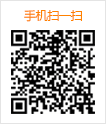
 浙公网安备
33010902000463号
浙公网安备
33010902000463号
